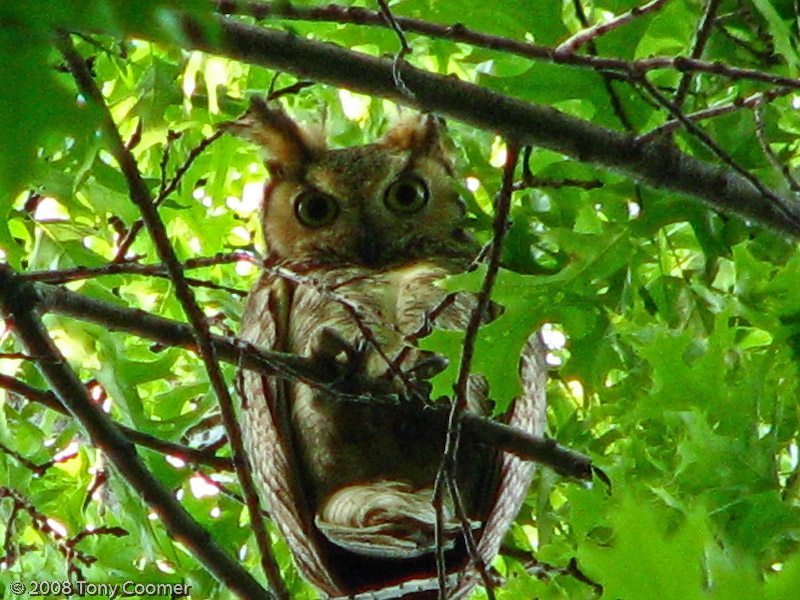|
|
Great Horned Owl One of the biggest American owls, with a body length of 1.5 to 2.5 feet and a wingspan of up to five feet, the Great Horned Owl is widespread and common across the North American continent and into South America. The large tufts of feathers on its head are widely spaced, resembling Batman's "ears", but have nothing to do with the owl's ears. Coloration varies among the subspecies within this owl's wide geographic range, but in the eastern US, it is mottled brown, grey and black, with a white patch on the throat above a light-colored and black-barred breast. This species can be found in almost all habitats in North America, from the desert to the forest and from northern tundra to city parks. It preys on a variety of animals, mostly mammals, including rabbits, squirrels, woodchucks, mice, cats and skunks, and large birds, such as crows, gulls, geese, chickens and other owls, as well as lizards, frogs, fish, large insects and even skunks. The large yellow eyes are fixed and unmoving in their sockets, so the owl must turn its head within a range of three-fourths of a circle to see to the sides. The ear openings, which are near the eyes, are placed asymmetrically on its head, one slightly higher than the other, so that the owl has a very good ability to locate a sound's source. Great Horned Owls who are paired are permanent residents in one area, but younger and unmated owls move to other areas in search of new territory, mates, or food. The pairs breed in the late fall and winter and nest early in the year, before most migratory birds return. They use other birds' nests or lay their eggs in cavities in trees or on rock ledges. The young are raised and fed by the parents until they can begin catching prey themselves in the fall. These owls make a number of different sounds, but the well-known "hoot" is most commonly heard during the mating season. |
Photos
© Tony Coomer, Suburban Backyard, Woodbridge, Virginia |
Home | Upcoming Events | About Us | Resource Issues | News | Local Contacts Maps | Photos | Publications | Youth Education | FAQ's | Links | Membership |






